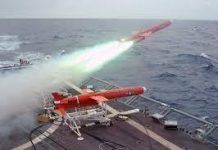
In June, the six European countries collaborating on a conventional long-range, ground-launched strike capability are expected to announce the lead companies for the project, as revealed by one of the contributors to a French parliamentary report on artillery. According to Jean-Louis Thiériot, a French deputy on the National Assembly’s defense committee, the European Long-range Strike Approach (ELSA) coalition has outlined 13 development pillars and will soon assign responsibility for each segment.
Thiériot emphasized that leadership in each area will be determined using a “best athlete” approach, with France playing a key role, particularly through Ariane Group for the ballistic segment. He expressed optimism about the progress on ELSA, highlighting that the project represents a coalition of voluntary, sovereign states that has managed to avoid the bureaucratic challenges often encountered in other types of cooperation.
The initiative gained momentum in July 2024, when France, Germany, Poland, and Italy signed a letter of intent at a NATO summit in Washington, with Sweden and the U.K. joining in October. The aim is to address a significant capability gap in long-range strike systems within European NATO members compared to Russia, which has a range of ground-launched ballistic and cruise missiles. France’s lack of a deep-strike, land-based capability presents a risk to its nuclear deterrence, which ELSA could help mitigate.
Thiériot also pointed out that the political will to push ELSA forward is supported by manufacturers who are avoiding cumbersome processes like those in the European Defence Fund. He emphasized that there is a strong desire for efficiency, which aligns with both French and broader European interests.
Meanwhile, companies like Ariane Group, MBDA, Safran, and Thales have not yet responded to requests for comment, but MBDA has proposed a land-based version of its Missile de Croisière Naval as a short-term solution. The report advocates for both ballistic and cruise missile technologies to be developed, as they each offer unique advantages—ballistic missiles are ideal for fixed targets, while cruise missiles excel in precision strikes on both fixed and moving targets.
The proposed ground-based, long-range strike system would complement existing air and sea-launched cruise missiles and provide an additional offensive option for decision-makers, especially in escalation management. The French artillery report suggests that using all available strike assets at great depths could overwhelm enemy defenses and create strategic dilemmas.
Given the constraints on France’s Navy and Air Force capabilities due to air defenses, a land-based system could offer increased flexibility and better opportunities for opportunistic targeting. Feedback from visits to Ukraine has shown that ground-based ballistic missiles are less likely to be intercepted than cruise missiles, which further strengthens the case for focusing on this technology.
Thiériot also noted that France’s existing nuclear deterrence and ballistic strike capabilities put it in a good position to quickly develop these new systems. On a related note, French manufacturer Turgis Gaillard announced a new truck-mounted long-range strike system, Foudre, which can fire both French and allied munitions. This system will be presented at the Paris Air Show in June.
Finally, France’s Directorate General for Armament (DGA) is collaborating with Safran, MBDA, Ariane Group, and Thales on developing a tactical strike capability with a 150-kilometer range to replace outdated rocket launchers. Turgis Gaillard’s new launcher is intended to complement these efforts, with the ability to fire munitions developed by both consortiums. According to Matthieu Bloch, a co-author of the artillery report, fire control and missile solutions for the launcher are critical and should be sovereign, while the chassis and launch pods are less essential.




